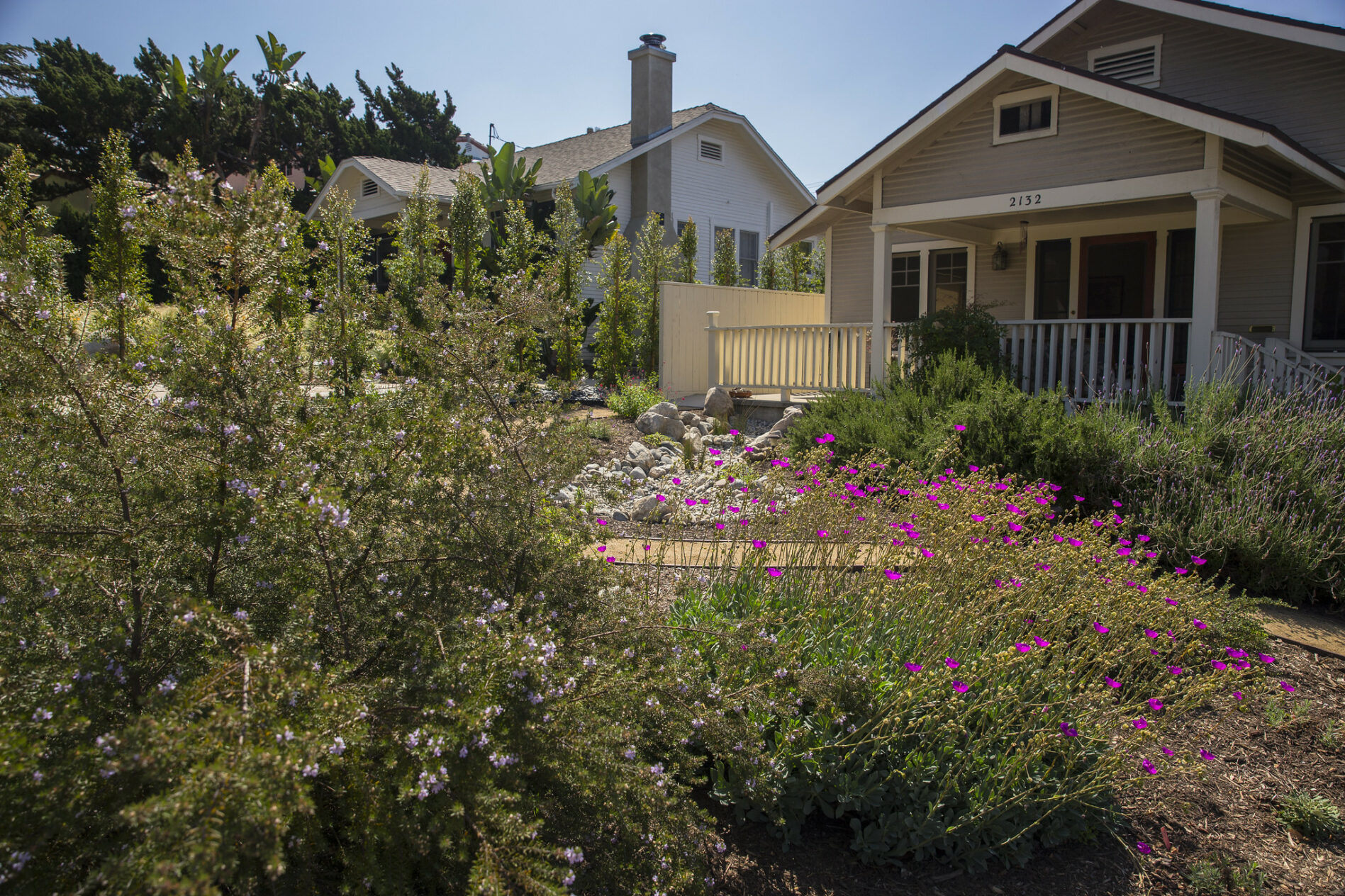As your garden evolves from a typical lawn-centered landscape to one that is more sustainable and appropriate to our southern California climate, it is important that the maintenance of your yard shifts to accommodate the new landscape. Sometimes this involves working with your gardener to better understand the needs of your garden.
Some helpful tips to consider:
1) Adjust Your Maintenance Schedule
The shift toward a more climate-appropriate garden encourages a shift in how to schedule gardener maintenance visits. Water-saving gardens don’t require quick, weekly maintenance, but rather more intensive maintenance on a monthly basis.
Consider shifting to a monthly schedule with longer on-site time. By shifting the schedule, it provides an opportunity to care for the site holistically, support the health of the soil, and tend to trees and plants properly.
Some sustainable landscape maintenance tasks can happen on a seasonal basis. For example, using mulch on the soil is a good practice and only needs to be replenished seasonally. Some seasonal tasks to consider:
- Refresh mulch: spring/fall
- Clean out gutters: fall
- Install new plants: late fall/winter
- Flush out irrigation systems: late winter/early spring
2) Focus on Soil Health
Healthy soil is the foundation of a thriving landscape. It works as a sponge to hold onto and release water and supports plants and life in your sustainable garden.
Maintenance to ensure continually healthy soil is pretty simple: apply mulch, and avoid tilling and compacting the soil. Additionally, avoid using any chemical fertilizers, pesticides and herbicides that kill the vital microbes in the soil.
For guidelines on maintaining soil health and healing compacted soil, here is a video that can be shared with your gardener in English and Spanish.
3) Follow an Appropriate Seasonal Water Schedule
Understanding seasonal weather patterns, and when and how much water plants need or don’t need, will help you to maintain an appropriate water schedule that supports healthier plants, saves water and money. For example, the watering needs of low water-use plants and California natives follow our typical seasonal rain pattern. These plants are irrigated by natural rainfall when they need it the most, and require little water when we have no rain!
For guidelines on managing a climate-appropriate water schedule, here is a video that can be shared with your gardener in English and Spanish.
Other resources to help with your water schedule include the use of a Smart Controller, also known as a Weather Based Irrigation Controller (WBIC), for your irrigation system. It accurately applies water only as needed according to local weather conditions. Go here to learn about rebates. Another is the Metropolitan Water District’s water calculator. Check it out here.
4) Prune Plants Properly
Understanding basic pruning principles and proper pruning cuts is needed to maintain healthy, thriving plants. By remembering that each cut that is made creates a wound, ensures the use of thoughtful pruning.
For example, “topping” is a harmful pruning practice that causes a flush of weakly attached branches. Leaving a stub when cutting a branch, prevents the wound from sealing over. This remaining stub often dies, and is then susceptible to disease and pests.
Following basic rules for pruning will help to ensure happy plants and trees. For guidelines on how to prune plants properly, here is a video that can be shared with your gardener in English and Spanish.

